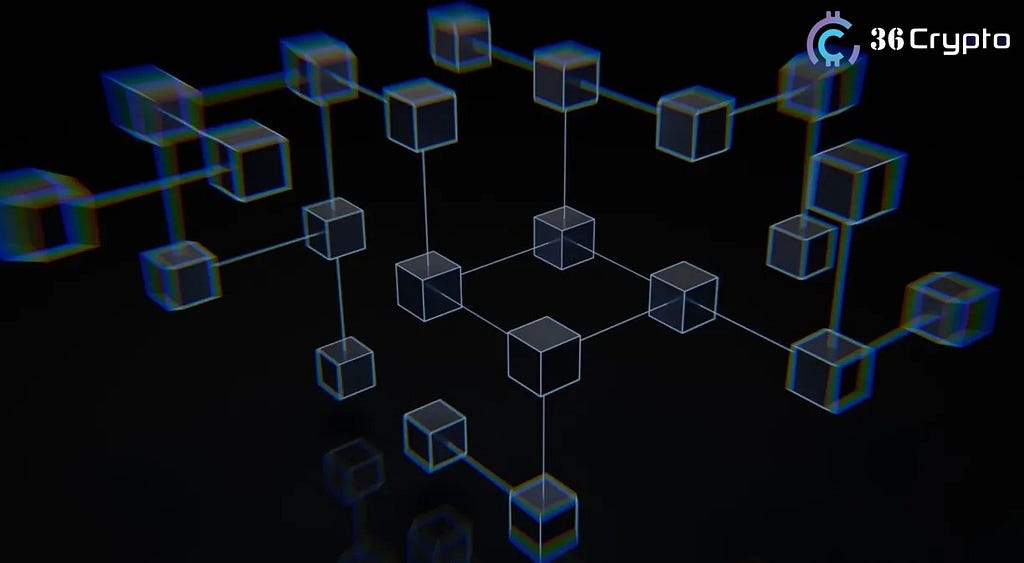
As blockchain technology gains mainstream acceptance, understanding the differences between on-chain and off-chain transactions is essential. These two transaction types serve distinct purposes within the blockchain ecosystem, offering unique benefits and trade-offs.
This article explores how these transaction methods work, their advantages and disadvantages, and their use cases.
What Are On-Chain Transactions?
On-chain transactions are conducted directly on the blockchain and approved by consensus models like Proof of Work (PoW) or Proof of Stake (PoS), ensuring their security and resistance to alteration.
On verification, they are attested to the blockchain, and the data is immutable, saving them for anyone who can join the network.
Also Read: Monero (XMR) Price Prediction 2025–2029: Will Monero Price Hit $550 Soon?
How does an on-chain transaction occur?
For each on-chain transaction, inputs are needed to define the address of the target user and the amount to be transferred to the latter. The transaction is verified using the sender’s private key to enhance security.
The transaction is signed with the sender’s private key to ensure authenticity and security, after which it is broadcast to the network for validation by nodes through consensus mechanisms.
Benefits of On-Chain Transactions
What makes on-chain transactions unique is that all of them are recorded and can always be checked on the blockchain. Some provide historical audit trails offering some proof that may not be changed once it has been entered.
Another advantage is the security field because decentralized consensus encrypts and validates transactions. In addition, on-chain transactions involve no intermediaries concerning the goal of decentralization inherent in the blockchain system.
Disadvantages of On-Chain Transactions
On-chain transactions come with several disadvantages, including high fees often caused by significant congestion in the network system. Another issue is the energy the blockchain system spends, particularly in using PoW with its need for a lot of computing power. Also, the speeds of transactions are relatively low because the network tends to be congested most of the time.
What Are Off-Chain Transactions?
Off-chain transactions occur outside the primary blockchain, often on secondary layers or sidechains. Due to operating outside the main blockchain, they relieve the main chain of traffic to its forefront, hence motivating integration. Some examples are the lightning network found within Bitcoin and the concept of side chains of Ethereum, among others.
How Do Off-Chain Transactions Work?
In contrast, the off-chain transaction means that the buyers and sellers agree to complete the transaction off the main blockchain. Payment channels include the likes of the Lightning Network, and they enable several transactions between two parties to co-occur.
Appreciatively, the channel balances are only recorded on the blockchain once the channel is closed, and only the initiate balance is settled. Likewise, sidechains work alongside the main blockchain, handling transactions away from the main string and, at set intervals, synchronizing results with the main string.
Advantages of Off-Chain Transactions
Off-chain transactions are more cost-effective since they do not require much consensus determination. They also have a quicker processing ability than other forms of payment, making them suitable for frequent use.
Despite these drawbacks, improved privacy is a strong point because data is not carved in the air in case of private transactions, and data is not recorded in the public blockchain.
Read Also: Will Ripple’s RLUSD Ever List on Binance and Coinbase?
Disadvantages of Off-Chain Transactions
Lack of transparency in off-chain transactions can lead to disputes, as details are not visible on the blockchain. They are also comparatively safer than on-chain transactions as they generate input from third-party or intermediary nodes. Trust is central to this type of contract because the participants depend on the word of the other parties.
Choosing Between On-Chain and Off-Chain Transactions
On-chain and off-chain transactions are differentiated by their specific usage and application, with on-chain transactions being ideal for settlement, value transfer, unmasking, and situations requiring confidentiality and tamper-proof services.
On the other hand, off-chain transactions are best for less costly, faster, and more private applications. Each approach plays a role in the general scheme of development of the blockchain ecosystem, as each tackles a specific problem.
Conclusion
On-blockchain and off-blockchain transactions are two categories that exist mutually within the blockchain framework. On-chain exchanges are more secure, open, protected, and best suited for large transfers and any application requiring a permanent ledger.
As for speed, cost, and anonymity, off-chain transactions are designed for high-frequency, low-value, and sensitive or identity-preserving payments. Therefore, these types of transactions are highly relevant to the future development of blockchain technology in future distributed environments.
FAQs
What are on-chain transactions?
On-chain transactions are processed and validated directly on the blockchain network using consensus mechanisms.
How do off-chain transactions work?
Off-chain transactions occur outside the main blockchain and are settled externally or through secondary layers like sidechains.
What is the main advantage of off-chain transactions?
Off-chain transactions offer lower fees and faster processing speeds compared to on-chain transactions.
Are on-chain transactions more secure than off-chain transactions?
Yes, on-chain transactions are more secure due to decentralized validation and immutable records on the blockchain.
Which transaction type is better for high-value transfers?
On-chain transactions are better suited for high-value transfers due to their transparency and security features.
Also Read: Golem (GLM) Price Prediction 2025–2029: Will GLM Price Hit $5 Soon?
Originally published at https://36crypto.com on January 10, 2025.
Understanding the Difference Between On-Chain and Off-Chain Transactions was originally published in The Capital on Medium, where people are continuing the conversation by highlighting and responding to this story.


 2 weeks ago
5
2 weeks ago
5 









 Bengali (Bangladesh) ·
Bengali (Bangladesh) ·  English (United States) ·
English (United States) ·